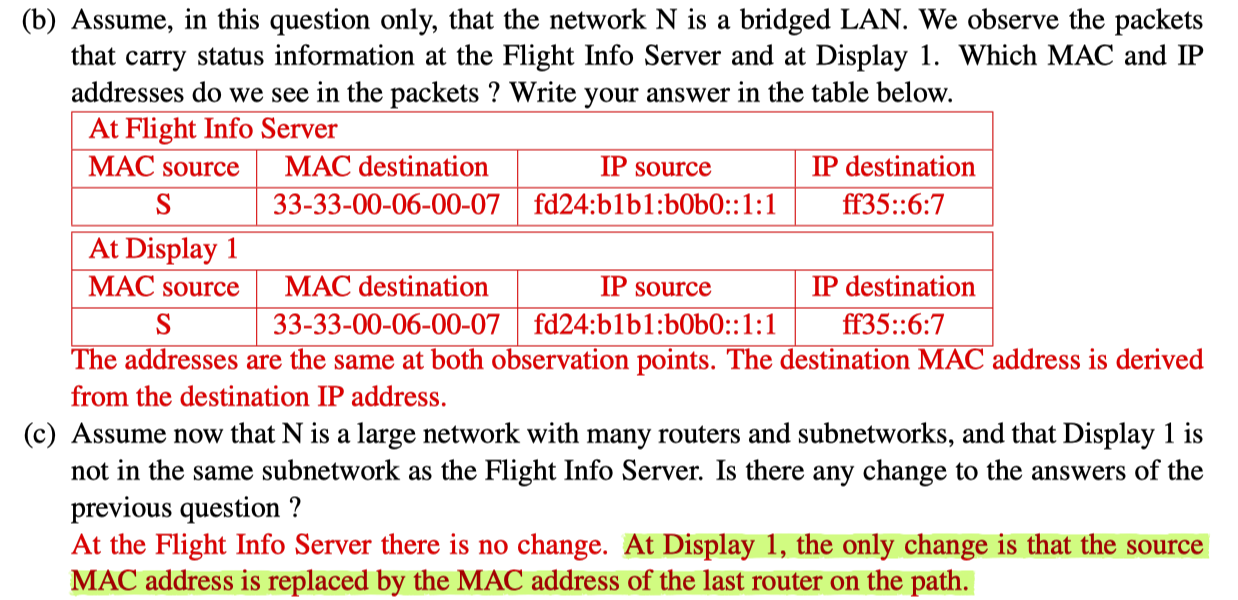Hi there,
I have several questions regarding the past paper 2022 solution given.
Problem 1, question 3

Here it's discussing 3 cases by choosing different roots for the spanning tree. Whereas if referring back to the lecture slide attached below (as well as the similar one in 2020’s exam solution problem 1, 1(c)), wouldn't the root always be B1 ‘cause it’s the one with the smallest label? Also since we do not know the cost of the path, I suppose would answer that one of the 3 links (B1-B2, B2-B3, B1-B3) will be deactivated (based on the cost). Then, e.g. for the IPv4 packet, if B1-B2 or B1-B3 is deactivated, O3 will observe it; if B2-B3 is deactivated, O4, O5 will observe it.
In Lecture slides [MAC] pages 29-31,


Problem 2, question 1 (d)
I'm just wondering where we could find that the injection of BGP next-hop into the forwarding table is enabled in the question specification, or do we assume that injection exists by default?
Problem 2, question 3 (a)
(highlighted in green below) at R2, would the cost both be 103 instead? To reach from R2 to A2, the cost is 1; from A2 to 2001:1:1::/48 the cost is 102, so in total 103; and for the other, would be cost of R2-R1 + cost of R1-A1 + cost of A1-2001:1:1::/48 = 101 + 1 + 1 = 103 as well I guess
Problem 4, question 1(c)
I'm quite confused about the (c) part. e.g. at the flight info server, why wouldn't the destination MAC address change to its next hop router’s MAC address? (Does it mean that for this packet, whenever it goes through a new router, only the MAC src address will be modified to the new router's MAC?)
Could you kindly point out where I could learn about the topic in the lecture slides please?

In addition, I have a less technical question about giving the justification as indicated on the front page of the exam sheet. I wonder if justification is required even for the multiple-choice questions (i.e. the ones asked to cross the box) and filling-up-table questions (e.g. the above-attached Problem 3, question 1 (b) part since in the solution sheet, it contains the justification "The addresses are the same ... IP address.")?
Thanks so much for taking the time to read this!
Best,
Yiren